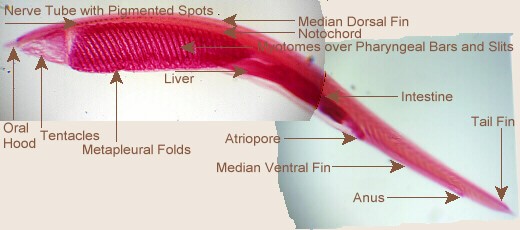Classification
Domain: Eukarya
Kingdom: Animalia
Phylum: Chordata
Class: Mammalia
Order: Cetacea
Family: Balaenidae
Genus: Eubalaena
Species: australis
Domain: Eukaryota
Organisms with eukaryotic cells: membranous bound organelles
multicellular organisms
Cell division by mitosis, with a variety of cycles of reproduction
and recombination
A variety of modes of access to energy and carbon, varying with
kingdom
If you would like to explore more organisms in the Domain Eukaryota
check out
Brian's Webpage.

Kingdom: Animalia
All multicellular (metazoans) and eukaryotic
Move, breathe and reproduce
ingestive heterotrophs (receive nutrients from other organisms)
have some type of skeletal support
Shows levels of organization including: cell, tissue, organ and
system
specialized cells
sexual reproduction (sperm and egg that forms inside bodies of
animals)
If you would like to explore more organisms in the Kingdom Animalia
check out
Lauras Webpage!
Phylum: Chordata
Notochord, or a rod of vacuolated cells, encased by a firm sheath
that lies ventral to the neural tube in vertebrate embryos and some
adults
Hollow nerve cord that lies dorsal to the notochord
Pharngeal pouches
Endostyle= elongated groove in the pharnyx floor of protochordates
that may develop as the thyroid gland in chordates

All chordates have a number of structures in common:
A notochord (noto = the back; chord = string) is present in all
embryos, and may be present or absent/reduced in adults. This is the
structure for which the phylum was named.
Formation of Nerve Cord A dorsal, hollow, ectodermal nerve cord
(compare with Annelida and Arthropoda which have ventral, solid,
mesodermal nerve cords) typically forms by an infolding of the
ectoderm tissue, which then “pinches off” and becomes surrounded by
mesoderm. Spinal bifida is the failure of the nervous system to
close.
The pharangeal slits (pharynx = throat) originally functioned in
filter feeding: water is taken into the mouth and let out via the
pharangeal slits. The slits filter out food particles and keep them
in the animal’s body so they can be put into the digestive tract. In
fish, these have become modified as gills, and in humans as our ears
and eustachian tubes.
A postanal tail (post = behind, after; anal refers to the anus) is
present and extends behind the anus in many taxa, thus the anus
isn’t at posterior tip of body. In humans, the tail is present
during embryonic development, but is subsequently resorbed.

Class: Mammalia
1) Warm blooded.
2) Possess hair which is made of keratin. The evolution of mammalian
keratin is believed to be independent of reptilian keratin. Hair
provides insulation .
3) Endothermic. The majority of the heat energy is used to maintain
their high body temperature.
4) Four chambered heart.
5) Mammary glands are used to produce milk to nourish their young.
Female glands are the only functional glands.
6) Thediaphragm is a muscle that separates the thoracic cavity from
the abdominal cavity.
7) Seven cervical vertebrae (neck bones) are present in most
mammals.
8) Most are viviparous though some are oviparous. An extended
gestation period uterine development is common in most placental
mammals.
9) Teeth are imbedded in the jaw bone and come in a variety of
forms.
10) Well developed brain.
11) Mammals developed from the therapsid ancestors during the
Triassic period.
12) Mammals are heterodontic, meaning that their teeth are different
shapes, except those with no teeth at all.
13) Reptiles and fish have teeth that are all basically the same,
though they can vary in size throughout the mouth. See image above.
14) The Buccal Cavity (the mouth) has a false palate as a roof,
meaning that the nostrils do not lead directly into his mouth.
15) The body is maintained at a constant temperature they generate
heat within their bodies metabolically and also have special cooling
mechanisms.
16) Highly developed neopallium.
17) Tectum reduced to corpora quadrigemina: functions mainly as a
relay center for auditory information and to control visual
reflexes.
18) Corpus callosum in eutherians provides additional communication
19) Smell acute except whales and higher apes.
20) Eye typical of amniotes.
21) Tapetum lucidum well developed in nocturnal mammals.
22) Touch- most have vibrissae that are controlled by facial
muscles.
23) Lateral movement of jaw during mastication.
24) Viviparous except monotremes which are egg lying.
25) Parental care well developed.
Key characteristics of mammals are the presence of fur/hair and
mammary glands, derived from modified sweat glands, which produce
milk for the young. Mammals have a diaphragm to aid in respiration.
They are endothermic. Most mammals bear live young.
If you would like to explore more organisms in the Class Mammalia
check out
Rachel's Webpage.
Order: Cetacea
Family: Balaenidae
Genus: Eubalaena
Species: australis
Click here to continue onto our Habitat page or go back to our Home page!
